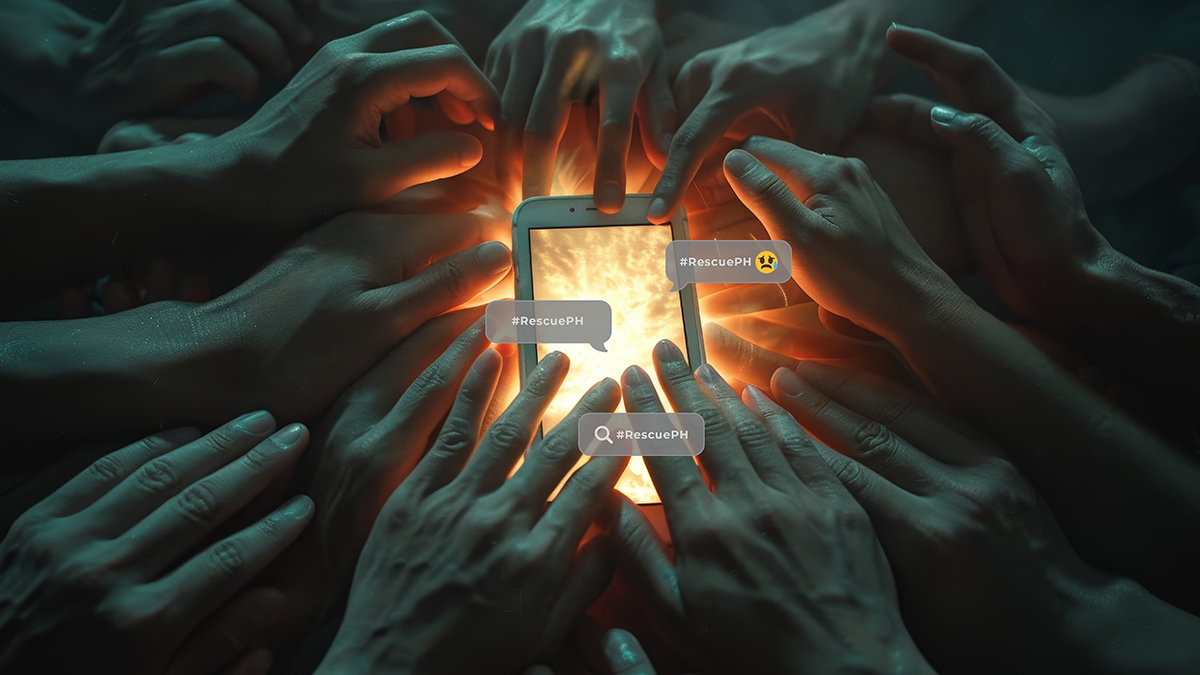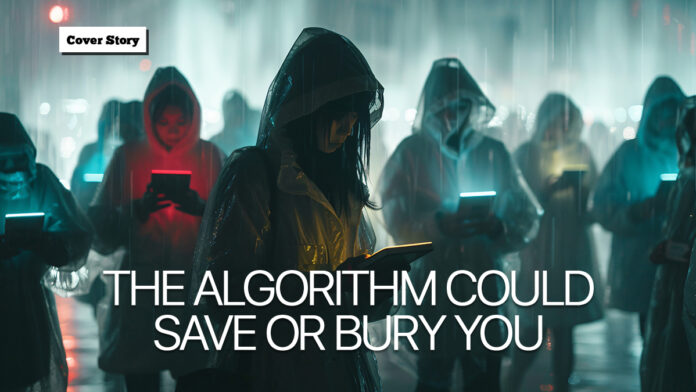Why visibility on social media during disasters could mean the difference between being rescued and being ignored, and how we can make the system work better.
You felt dizzy and thought it might be just a simple case of vertigo. Then your phone buzzed. You open your feed and see it: a flood of posts from internet friends asking, “Did you feel the earthquake?” Social media, it turns out, can sometimes move faster than your own instincts. It’s not just a reaction. It’s real-time validation. And in that split second, you realize the power it holds. A lifeline used to be a hotline. Now, it’s a tweet, a hashtag, a live video tagged to your barangay. As climate disasters grow more extreme, the first responders we count on may turn to scrolling, not dialing.
When a Hashtag Becomes a Lifeline
In February 2024, a deadly landslide hit Maco, Davao de Oro, displacing thousands and burying families under tons of debris. Some survivors, armed only with their phones, posted geotagged photos and pleas for help on Facebook and X (formerly Twitter). Their online visibility helped rescue volunteers locate them more quickly. But others, those without mobile data or knowledge of the platforms, waited in silence, unseen and unreachable.
Just months later, in July, Typhoon Carina caused flooding in parts of Marikina and Pasig. Again, Filipinos turned to social media. This time, they used hashtags, live videos, and crowd-sourced platforms like MapaKalamidad.ph to send out distress calls. Posts with sharp visuals and specific location tags tend to spread quickly. Others, lacking these details, disappeared into the algorithm’s void.
The lesson? In a disaster, being rescued may depend not just on where you are or how urgent your situation is, but on whether your post is visible enough to reach the right people.
In short: you don’t just need help—you need to be seen.
This isn’t new. When Typhoon Ulysses struck in 2020, the hashtags #RescuePH and #CagayanNeedsHelp were more than just calls for attention—they were lifelines. Digital volunteers trawled Twitter, amplifying posts that had photos, locations, and emotionally charged language. The algorithm rewarded content that mimicked breaking news or pulled at heartstrings.
And this isn’t accidental. Social media platforms prioritize what keeps people engaged even during a crisis.
So, while some urgent posts gained traction and led to swift rescues, others with the same level of desperation but fewer clicks were drowned out.
The terrifying reality is this: your survival can depend on how fluently you speak the algorithm’s language.

Tech Literacy to Algorithm Survival
Recent research reinforces these lived experiences. A 2023 Philippine study that analyzed real-time tweets during disasters showed that posts with emotional language, local terms, and clear visuals were more likely to be flagged by responders and algorithms alike. Another study found that distress posts using barangay names and native expressions gained more traction, confirming that visibility hinges on emotional and cultural specificity.
A broader global review warned that digital inequality, misinformation, and the lack of posting standards often render urgent posts invisible. These studies don’t just reflect sentiment; they show why algorithm fluency is now a survival skill.
Let’s unpack some insights from these cases:
Understanding how visibility works is crucial. Posts that include hashtags like #RescuePH, personal narratives, specific location tags, and images are more likely to gain traction. Emotional tone and urgency, when paired with clear details, help content travel further and faster, boosting its chances of reaching those who can respond.
Yet, digital inequality presents a dangerous gap. Many people lack the know-how to compose an effective SOS message, while others may have limited access to the internet or only know how to post within closed networks, such as Facebook friend lists. These constraints can silence even the most urgent calls for help.
Grassroots efforts are helping bridge the gap. Volunteer-driven sites like MapaKalamidad.ph and groups tracking #RescuePH plays a crucial role in surfacing overlooked content. These digital responders act as manual amplifiers within a system still governed by attention and engagement.
The platforms themselves hold the power to make systemic change. Imagine a built-in Disaster Mode—a feature that lets urgent posts bypass typical engagement metrics and algorithmic ranking entirely. Instead of likes or shares determining visibility, posts flagged as life-threatening would be prioritized by design.
Social media giants like Facebook and X could implement verified SOS systems, or even activate temporary, geo-targeted emergency modes that boost rescue-related content in affected areas. Visibility, in these cases, shouldn’t depend on virality; it should be automatic.
Bottom Line: Algorithms Are Now Part of the Rescue Chain
We’re used to thinking of resilience as physical—go bags, waterproof gadgets, emergency kits. But resilience in the digital age is also about visibility. Because if no one sees your post, your voice doesn’t reach the people who can help.
The algorithm wasn’t built for disasters. But disasters are here to stay. And so are we—online, connected, and trying to make the system work not just for content creators, but for people in crisis.
We are in the algorithm’s chokehold in most parts of life, and for better or worse, it shows. And in crisis, your survival might come down to whether the algorithm notices your call for help or scrolls past it.
Words by Aljhelyn Piador
Also published in GADGETS MAGAZINE Volume 25 No. 11 Issue.
